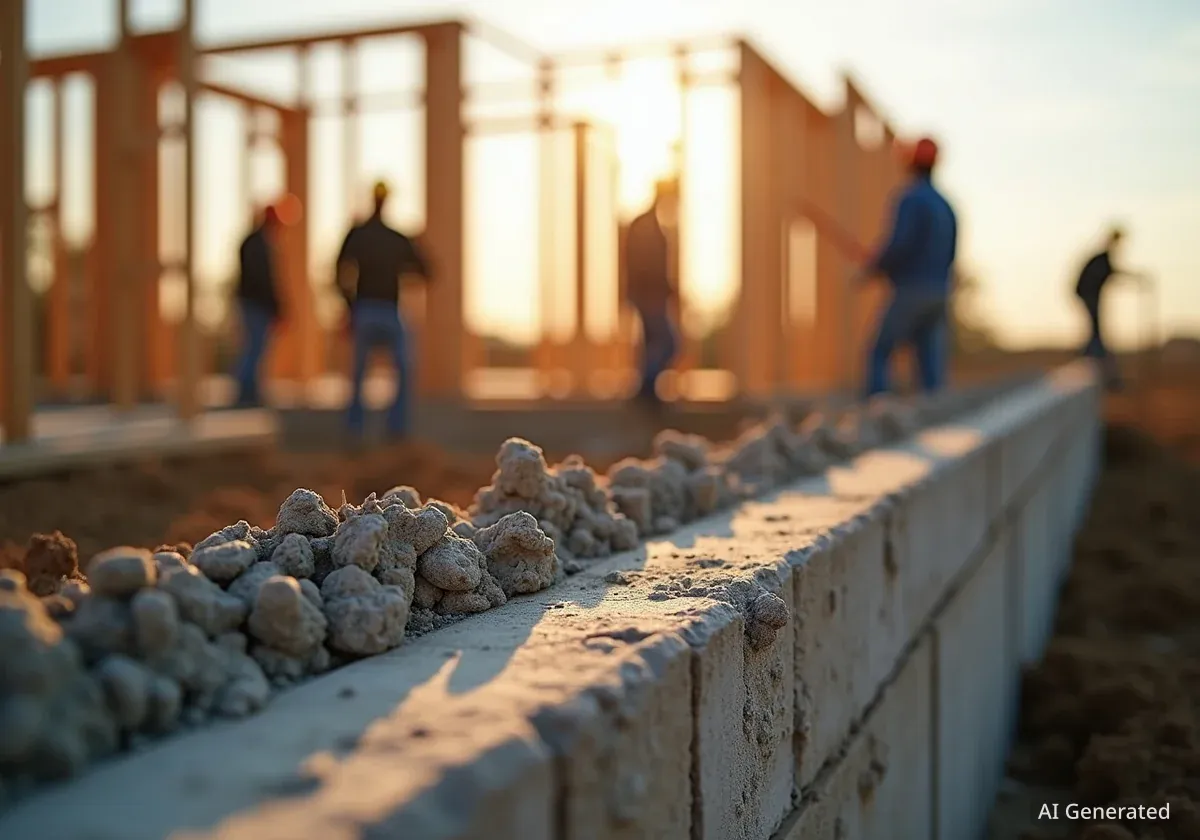The Texas Real Estate Research Center (TRERC) has released its comprehensive forecast for the state's property markets, projecting trends through mid-2026. The report anticipates moderate growth in the single-family home sector, a slowdown in apartment construction, and varied performance across commercial properties, all set against a backdrop of expected interest rate cuts and stable economic conditions.
Key Takeaways
- Single-Family Homes: Median home prices are expected to rise by 1.5% to $350,000 in 2026, with sales increasing by 2% to 340,000 units.
- Commercial Real Estate: The office market faces challenges with older buildings, while industrial and retail sectors show signs of balanced growth and recovery.
- Multifamily Sector: A significant slowdown in new apartment deliveries is projected, with fewer than 40,000 new units expected through summer 2026, compared to over 92,000 in the previous year.
- Economic Outlook: The forecast assumes no major economic shocks and projects the Federal Reserve will lower its target rate to between 3% and 3.5% by September 2026.
- New Legislation: Several new Texas laws are expected to influence development, particularly those encouraging higher density and mixed-use projects.
Macroeconomic Assumptions Driving the Forecast
The TRERC's projections for the Texas real estate market are built on a specific set of national and state economic assumptions for the period ending in June 2026. The forecast operates under the premise that no new, significant macroeconomic or geopolitical shocks will alter the current economic trajectory.
This outlook anticipates a period of steady, albeit slower, economic growth. It assumes that existing trade policies, tax reforms, and immigration rules will continue to influence the economy without major new disruptions. The analysis also presumes that geopolitical events, such as conflicts in Ukraine or the Middle East, will not escalate in a way that significantly impacts the U.S. economy.
No Recession Expected
A core assumption of the forecast is that the U.S. and Texas economies will avoid a recession over the next 12 months. This stability is crucial for the projected performance of the real estate sector.
Key Economic Indicators
The forecast relies on several key metrics to shape its real estate predictions. These drivers provide the foundation for understanding supply, demand, and pricing across different property types.
- Economic Output (GDP): U.S. real GDP growth is projected at 2% to 2.25%, while Texas is expected to outperform the nation with growth between 2.25% and 2.65%.
- Employment: Payroll employment is forecast to increase by 0.8% to 1.2% nationally. Texas is expected to see stronger job growth, ranging from 1.5% to 1.9%.
- Interest Rates: The Federal Reserve is anticipated to lower the federal funds target range to 3.0% - 3.5% by September 2026. Consequently, the 30-year fixed mortgage rate is projected to be between 6.0% and 6.4%.
- Inflation: The annual rate of change for the Consumer Price Index (CPI) is expected to moderate, falling within a range of 2.1% to 2.5%.
Residential Market Projections for 2026
Texas's residential market, which includes 8.3 million single-family homes, is poised for a period of stabilization and modest growth through mid-2026. After a weak start to 2025, the market is expected to gain momentum, driven by declining interest rates and steady demographic demand.
Single-Family Home Sales and Prices
Home sales activity is projected to rebound in the latter half of the year. The forecast calls for a 2% increase in total sales for 2026, bringing the total number of units sold to approximately 340,000. This would mark the first significant annual increase since the market's peak in 2021.
This rise in sales, combined with moderating inventory levels, is expected to support home values. The median home price in Texas is forecast to increase by 1.5%, reaching $350,000 by 2026. This follows a 2025 median price that was trending toward $345,000.
Construction Activity to Increase
The outlook for new construction is also positive. Single-family permits are expected to rise by 4% in 2026, reaching a total of 169,000 units for the year, signaling confidence from homebuilders.
Multifamily and Rental Market Outlook
The apartment market in Texas, which contains over 2.5 million units, is set for a significant shift. After a period of intense construction that saw over 92,000 units delivered in the 12 months prior to summer 2025, the pipeline is shrinking dramatically.
For the year ending in summer 2026, total apartment deliveries are projected to be less than 40,000 units statewide. This sharp decline in new supply is expected to impact the rental market. Rent growth for newly constructed units will likely remain soft, with concessions leading to negative effective rent changes. However, rents in stabilized, existing properties are expected to be flat or slightly positive.
Commercial Real Estate Sector Analysis
The forecast for Texas's commercial real estate sectors—office, industrial, and retail—presents a mixed picture. Each segment is navigating unique challenges and opportunities related to post-pandemic shifts in work, shopping, and logistics.
The Office Market's Ongoing Adjustment
The Texas office market, with 1.2 billion square feet of space, continues to adjust to new workplace dynamics. New deliveries are slowing, with only five million square feet expected through summer 2026. This is a slight decrease from the six million square feet added in the previous year.
A key trend is the "flight to quality," where tenants prefer premium, modern buildings. Net absorption, a measure of demand, is projected to be around four to five million square feet, nearly matching new supply. This demand will be concentrated in Class A+ properties, which are expected to see positive rent growth.
"Premium buildings will continue to fair best. Some older Class A, along with Class B and C buildings, may give up space," the TRERC report states, highlighting the growing divide in the market.
Older Class B and C buildings will likely experience negative effective rent changes as they struggle to compete for tenants. Rents for these properties are expected to average near $29 and $25 per square foot, respectively, by summer 2026.
Industrial and Retail Market Outlook
The industrial warehouse market is showing signs of recovery after a period of overbuilding. While new deliveries will still be substantial at around 50 million square feet, net absorption is projected to nearly equal this new supply. This balance should help stabilize the market, with most major metros expected to see some rent growth by mid-2026.
The retail sector remains solid. With 1.5 billion square feet of space, the market is well-balanced. Inventory is set to grow by a modest 0.5%, while net absorption is forecast to be between 0.5% and 1%. This stability is expected to support continued rent growth, with Dallas-Fort Worth projected to see at least a 3% year-over-year increase, and other major markets around 2%.
Rural Land and New State Legislation
Texas's vast rural land market, comprising 142 million acres, has seen sales volumes drop to a 10-year low. However, prices have remained resilient. The forecast suggests that as interest rates decline in 2026, sales activity should begin to pick up. Statewide prices are expected to hold near current levels or increase slightly.
Impact of New Texas Laws
The report also highlights several new laws passed by the 89th Texas Legislature that could significantly impact real estate. Many of these laws are designed to encourage denser development and streamline the creation of new housing.
Key legislative changes include:
- SB 15: Limits the ability of certain cities to impose minimum lot size and density requirements.
- SB 840 & SB 2477: Encourage the conversion of nonresidential properties into residential use by easing zoning regulations.
- SB 4 & SB 23: Propose significant increases to homestead exemptions for property taxes, pending voter approval.
- SB 17: Prohibits the ownership of Texas real estate by certain foreign buyers.
These regulatory shifts, combined with the underlying economic trends, will shape the direction of Texas real estate development and investment for the coming years.





